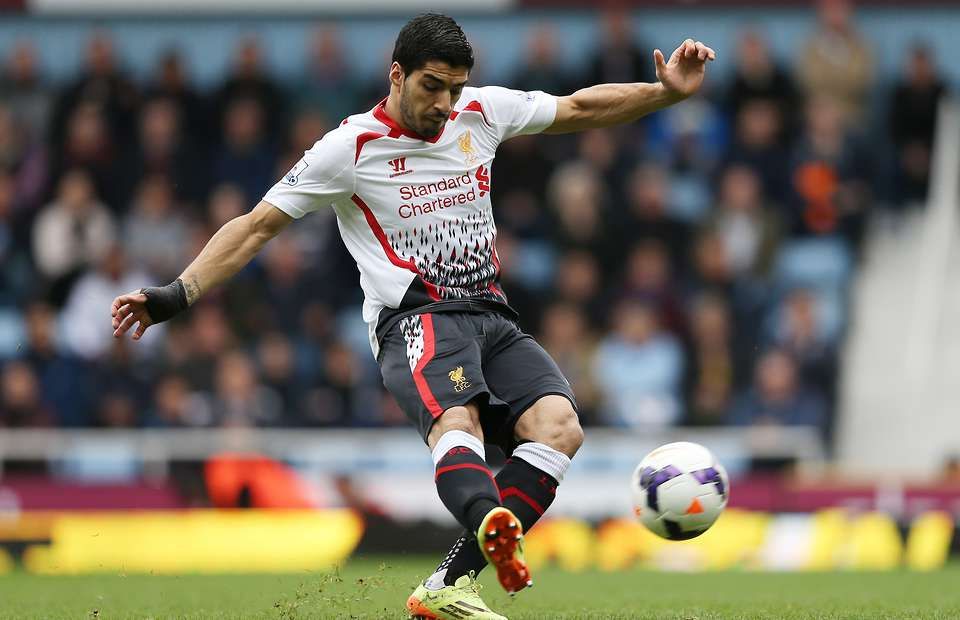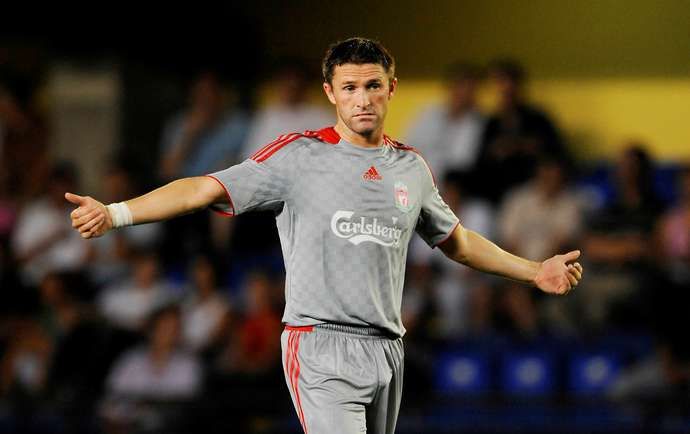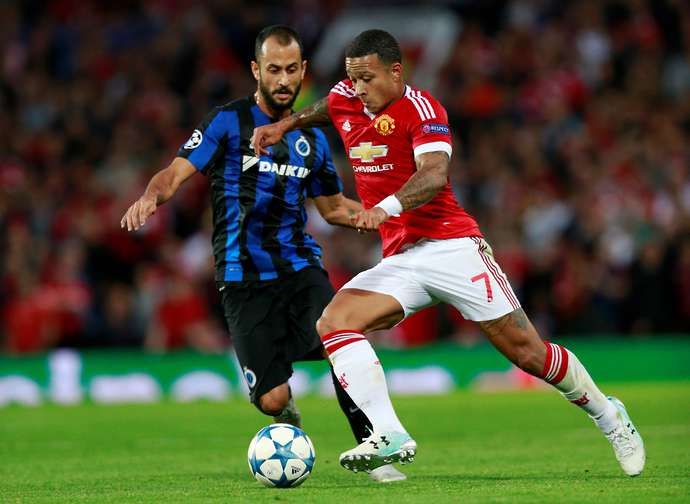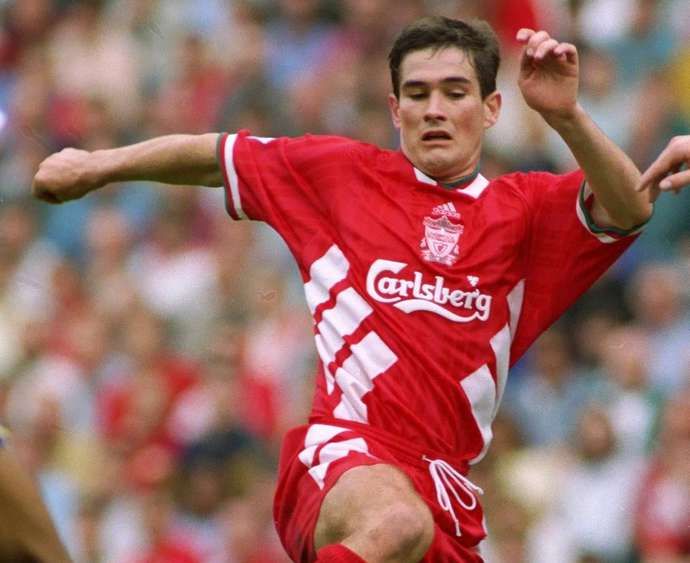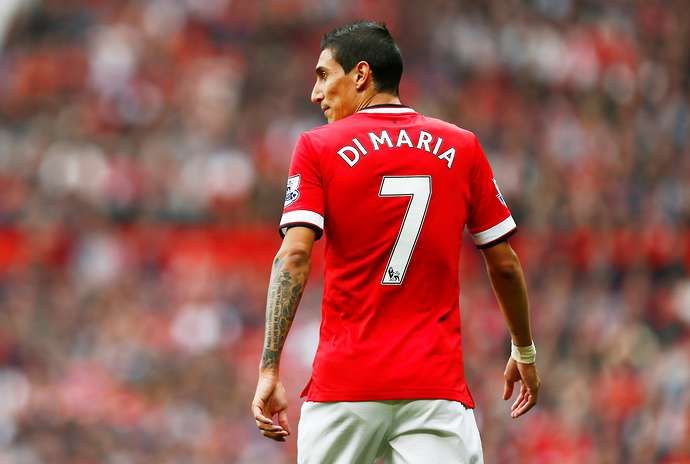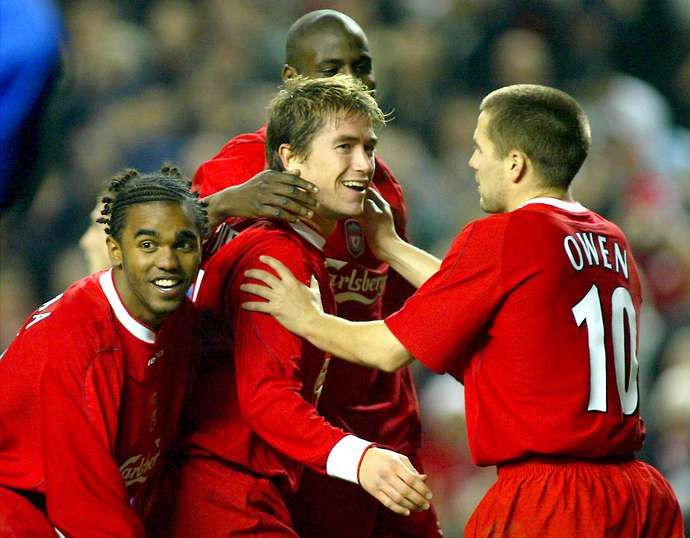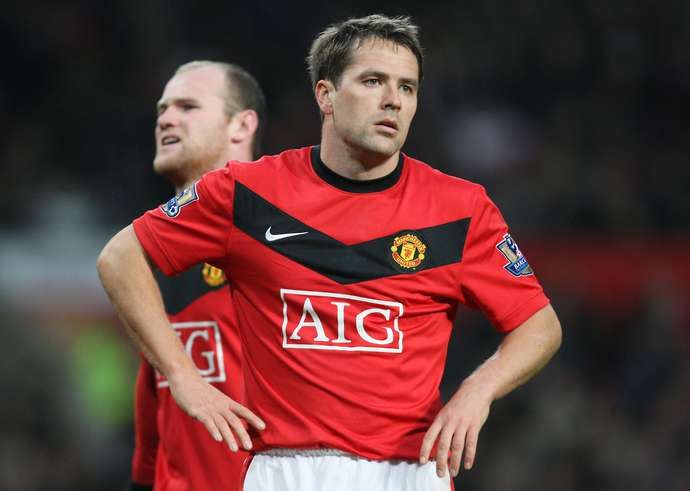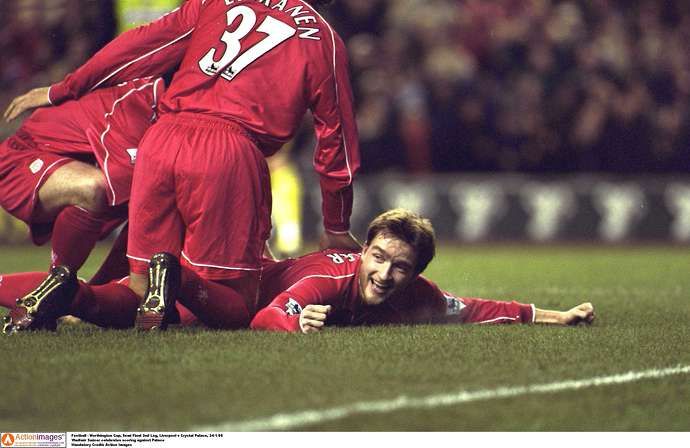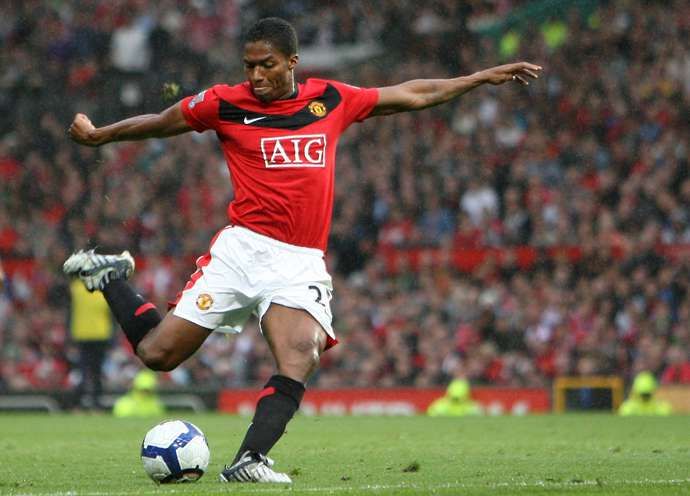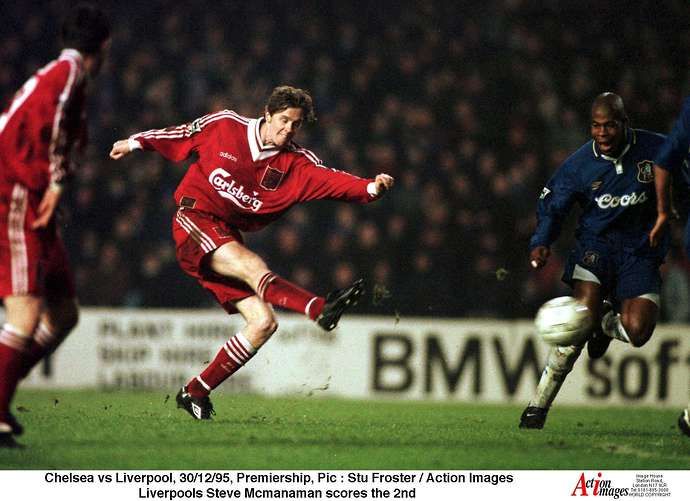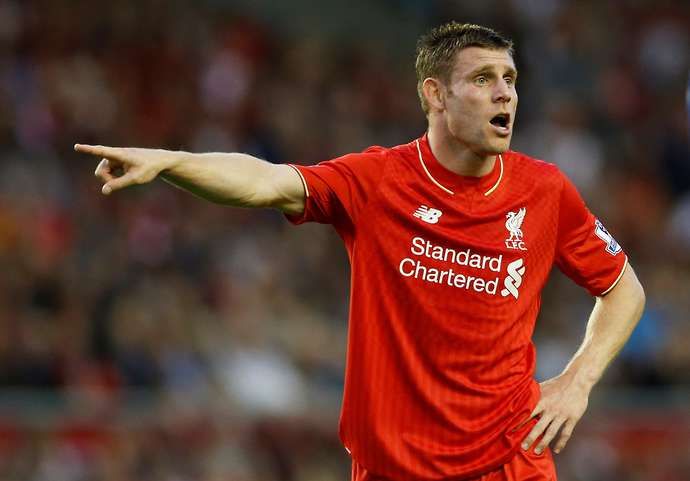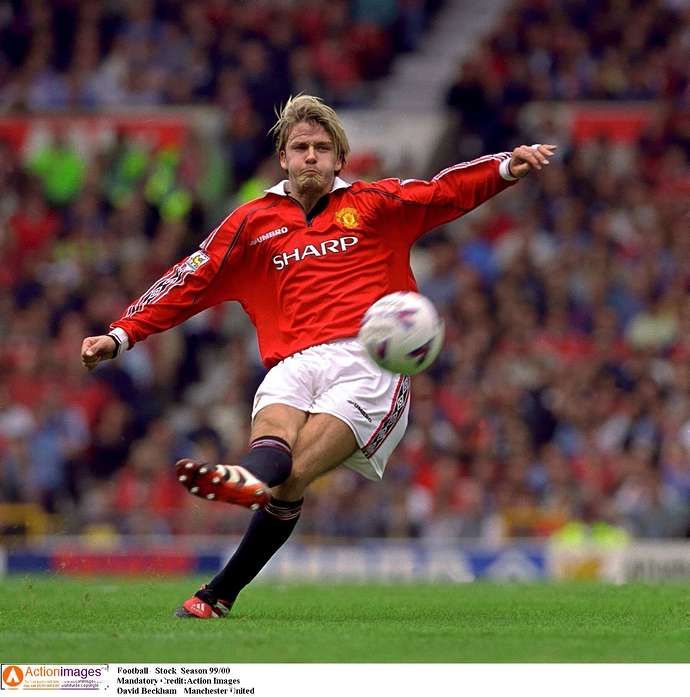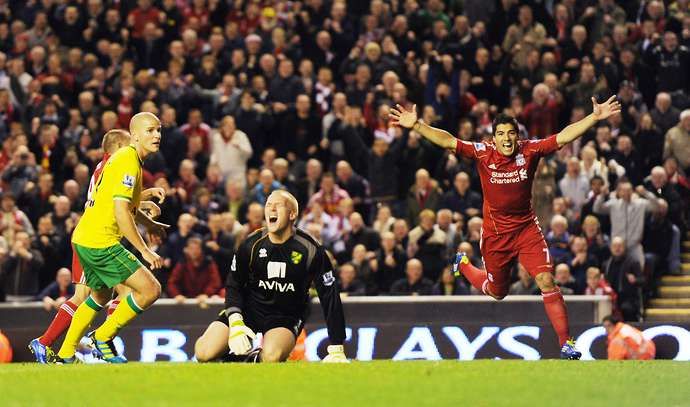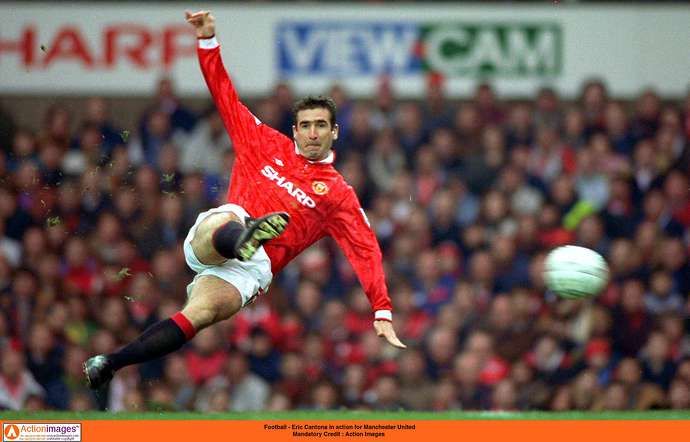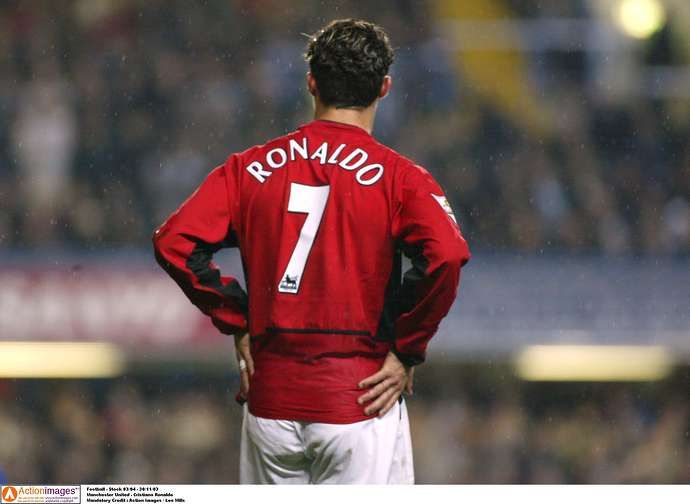To the ill-informed it may appear just a number, but few digits carry the same weight in football as that placed on the back of a No.7 jersey. Skill, energy, style and goals; while no two footballers are ever quite the same, those are the basic qualities any team expects from their No.7, someone who can quite simply inject an element of wow factor into proceedings by popping up from midfield to make something special happen.
That rings doubly true for Manchester United and Liverpool, two clubs who boast amongst the greatest No.7 alumni in world football, ranging from Ray Wilkins, Denis Law and George Best to Kevin Keegan and Kenny Dalgish.
The Red Devils have even welcomed a new No.7 to their ranks this summer in Edinson Cavani, but will he go on to further enrich the club’s glorious history of world-class players to wear the number or bring disappointment to the jersey? Where will he rank amongst his predecessors? And for that matter, who has produced the better No.7s throughout the Premier League era - United or their bitter rivals?
Cavani excluded, both clubs have handed the No.7 shirt to seven different players since assigned squad numbers were first introduced in 1993 - so here’s a rundown of all of them, from worst to best…
14. Robbie Keane
Robbie Keane’s a Premier League icon - a member of the 100 club and one of the busiest goalscorers in the competition’s history. While the Irishman is remembered fondly for his exploits with Tottenham and Coventry, however, his short stint at Liverpool was a bit of a disaster.
In fact, despite it costing £19m for Keane to join the club he supported as a child and Spurs filing a complaint to the Premier League over Liverpool’s behaviour during their pursuit of the tenacious forward, he lasted just six months at Anfield before returning to Tottenham in January.
Liverpool suffered a £7m loss after Keane spent much of his Reds career on the wing to facilitate Fernando Torres as the Reds’ single centre-forward, and the former Leeds man later revealed that fundamental disagreement with Rafa Benitez over his best position was the core reason his Liverpool stint spanned just 189 days.
13. Memphis Depay
If there’s one lesson to take from this article, it’s that you really need to hit the ground running if you’re going to specifically request Manchester United’s iconic No.7 shirt.
And while Memphis Depay has gone on to prove the doubters wrong with Lyon, amassing 58 goals and 53 assists in 144 games for the French side, he’s unfortunately remembered as one of the most underwhelming signings in Manchester United’s recent history.
The enigmatic Dutchman arrived to considerable fanfare having impressed under Louis van Gaal at the 2014 World Cup and then finished up as the Eredivisie’s top scorer in the following season, but a combination of the United gaffer’s conservative tactics and the elevated quality of the Premier League saw him struggle to adapt to life at Old Trafford.
Second seasons are often the turning point for foreign players but Depay found himself almost completely removed from the first-team picture going into the next campaign and in January left the Red Devils for Lyon.
12. Nigel Clough
Nigel Clough was a fantastic player on his day, as someone who could provide goals from a number of positions, ranging from centre-forward to central midfield, but it just didn’t work out for him on Merseyside following a big-money move from newly-relegated Nottingham Forest.
Clough ended Forest’s 1992/93 season with ten Premier League goals to his name, but despite joining the ranks of a much stronger Liverpool team, he could only manage seven during his debut season at Anfield and towards the end of the campaign lost his place in the starting XI.
The son of Brian hung around for a little longer, but only made ten league appearances in the following season and soon after left for Manchester City. He failed to win any silverware with Liverpool and the move to Merseyside marked the end of his involvement in the England national team. Ouch.
11. Angel Di Maria
Angel Di Maria sparkled during his early days as van Gaal’s shiny new No.7, winning the club’s Player of the Month award and the Premier League’s Goal of the Month award for September, with his unforgettable lob against Leicester City being among a plethora of eye-catching moments.
The early signs suggested Di Maria would quickly go on to justify the British record transfer fee Manchester United had forked out to sign him after lifting the Champions League with Real Madrid, but the turn of October sparked a disastrous downturn in form - further exacerbated by an injury and van Gaal’s knack of moving the Argentine around the midfield as he continually jostled the Red Devils’ starting XI.
Di Maria’s house was then robbed in February 2015 and although he managed to provide five Premier League assists after that point, the whole incident appeared to put him off living in Britain, something which Wayne Rooney would later label as the instrumental factor behind the attacking midfielder’s United spell going so wrong.
The following summer, Di Maria failed to board the plane for United’s pre-season tour and soon surfaced at PSG instead.
10. Harry Kewell
Harry Kewell was one of the most devastating attackers in the Premier League during his Leeds United days, his last season for the Yorkshire outfit resulting in 14 goals from 31 games, but just couldn’t bring that form to Liverpool and ultimately endured five incredibly frustrating years at Anfield.
The Australian’s first season showed some promise with seven goals and two assists in the Premier League, including a debut strike in a Merseyside Derby win over Everton, but his second term proved much more difficult as injuries suddenly became a recurring theme.
To much surprise, Kewell started for Liverpool in the 2005 Champions League final, but even that outing lasted only minutes as injury forced him off early in the first half. He’d go on to suffer a similar fate in the 2006 FA Cup final, this time making it to just after the interval before having to be withdrawn.
Liverpool never quite got the Harry Kewell that destroyed defences for fun at Leeds, but the Aussie at least helped the Reds clinch some silverware during his time with them.
9. Michael Owen
After arriving at Manchester United to much controversy due to his allegiances with Liverpool, Michael Owen did exactly what he was tasked to do by Sir Alex Ferguson - albeit, what he was tasked to do wasn’t really that much.
Indeed, during an era in which United boasted the likes of Wayne Rooney, Dimitar Berbatov and Javier Hernandez up front, Owen simply served as the club’s fourth-choice striker - a wise head in the dressing room and a goalscorer of immense natural pedigree who bolstered the all-round quality and depth of the squad.
An ageing Owen was wheeled out for cup competitions and cameos from the bench, and although he never came close to reproducing his ‘Boy Wonder’ form in a Red Devils jersey, he did provide a healthy supply of goals, averaging one goal involvement every 94 minutes.
Throw in the fact he was signed on a free transfer and his famous last-second winner in the Manchester Derby, and Owen was a pretty inspired signing from Ferguson, even if his status in the squad didn’t quite match the gravitas of his shirt number.
8. Vladimir Smicer
Vladmir Smicer fittingly lands slap-bang in the middle of this rankings list, echoing a Liverpool career that traded off an overall knack of being largely underwhelming with some iconic moments in the Reds’ No.7 jersey.
Smicer is probably remembered best for scoring in Liverpool’s 3-3 comeback against AC Milan to lift the Champions League trophy in 2005, while he also netted a stunning volley against Borussia Dortmund and in total produced eight of what Transfermarkt define as game-winning goals - goals that put the scoreline in the direction it eventually finished up in.
But overall, a return of 19 goals and 25 assists in 184 appearances isn’t exactly stellar for an attacking midfielder wearing the same shirt once donned by Dalglish - those sublime moments throughout Smicer’s Anfield spell are unfortunately juxtaposed by him only making his mark in fleeting instances, rather than week-in, week-out.
7. Antonio Valencia
Perhaps the toughest one to judge, because during the only season in which Antonio Valencia actually wore the no.7 shirt - 2012/13 - he was actually pretty underwhelming, despite Manchester United claiming their last Premier League crown under Ferguson.
Indeed, the Ecuadorian only managed one strike from the right wing and that goal-shy campaign essentially triggered the revision of his position, the next term seeing him feature as a right-back for the first time under David Moyes as he ditched the No.7 jersey to return to his trusted 25 shirt.
But it’s hard to knock Valencia’s overall contributions to United. Before leaving in summer 2019, he’d made 339 appearances for the Red Devils, won two Premier League titles, an FA Cup, a League Cup and the Europa League, and progressed to captain status under Jose Mourinho.
The veteran wide-man never quite met the billing of being Cristiano Ronaldo’s direct replacement, but he’s been one of United’s greatest servants since the turn of the millennium.
6. Steve McManaman
Now here’s a player who was always a joy to watch. Floppy-haired, fleet-footed and capable of both scoring and creating from practically any midfield position, there’s a reason Steve McManaman is still remembered as a footballing legend in Madrid.
He’s thought of pretty highly on Merseyside too, albeit his departure to the Bernabeu - as one of the first high-profile free transfers following the introduction of the Bosman rule - leaving something of a sour taste in his hometown.
The only reason Macca doesn’t feature higher on this list is that, despite providing 66 goals and 35 assists from midfield for Liverpool, he somehow managed to only ever lift the League Cup with the Reds - a pretty miserly return for eight seasons in the their first team after emerging from Anfield academy setup at the start of the 1990s.
Maybe if he played in a different era, the now-BT Sport pundit would be somewhere closer to the top of the No.7 charts.
5. James Milner
Arguably the most unassuming player for English football to run out of superlatives for. What can we say about James Milner that hasn’t already been said and Premier League fans don’t already know?
Milner now stands at a whopping fifth in the competition’s all-time appearance charts and at this stage in his career has done and won pretty much everything - Premier League titles, FA Cups, League Cups and the European title, while fluctuating his positions from anywhere between emergency false 9 to left-back.
More pertinent to this article is the impact Milner’s had on Merseyside. While he’s no-longer a guaranteed starter, his arrival from Manchester City in 2015 has coincided with a clear shift in mentality at Anfield, from a club begrudgingly settling for also-ran status to one that desperately wants to dominate English football.
Of course, that hasn’t all been down to Milner - Jurgen Klopp’s played an intrinsic role - but his arrival was an important step in the right direction, and the Premier League champions are now reaping the rewards.
4. David Beckham
Old Golden Balls himself is probably the United player most synonymous with their No.7 jersey during the Premier League era, so the fact he’s not taken first place here shows just how competitive the top end of our rankings really is. That and the fact you always have to question how much of said synonymy owes to Beckham’s footballing ability, compared to the ingenuity in which he grew the Beckham brand.
Credit where it’s due, Beckham was an exceptional midfielder, one who combined immense work-rate and energy with world-class set pieces and of course regular moments of open-play brilliance as well. Alongside the likes of Roy Keane, Paul Scholes and Ryan Giggs, eight years in United’s first-team bore the fruits of six Premier League titles, two FA Cups and the 1999 Champions League crown. You can’t really argue with that.
But Beckham had limitations as a footballer too, and that’s perhaps why a debate still remains over whether the former England captain was truly a world-class player in his heyday, or merely a top-class one who knew how to market himself effectively.
3. Luis Suarez
After a mediocre first 18 months with Liverpool, having been signed from Ajax in a January Deadline Day scramble following Fernando Torres’ £50m move to Chelsea, Luis Suarez suddenly emerged as one of the most relentless attacking forces ever witnessed in the Premier League.
It wasn’t just the sudden influx of goals, with Suarez netting a stunning 54 during his final two Premier League campaigns, but the utter tenacity in which he got them, whether in the form of frantically pressing opposition backlines or merely pouncing on weakness, like the three occasions in which he scored hat-tricks against regular whipping boys Norwich.
It would be unfair to say he almost won the Premier League title single-handedly during the 2013/14 season, but it would be equally unfair to say Liverpool would’ve got anywhere near it without Suarez playing at full velocity every week, elevating his game to truly world-class levels.
The Uruguayan didn’t hang around in the Premier League for too long but if we isolate the form of his final two seasons, he was as devastating a striker as the competition’s ever seen.
2. Eric Cantona
The King. You could never quite tell if he was going to dribble the ball past everyone to score into an empty net or kung-fu a Crystal Palace fan, belt the ball from 40 yards or sit on the substitutes bench writing a poem about the futility of modern man, but as soon as that collar was flicked up you knew something special was about to happen.
Eric Cantona is perhaps the most transformative player in Premier League history. He transformed Manchester United into the most dominant force in English football. He transformed transfer policies into focusing on foreign imports who could make light work of our meat-and-potatoes defenders. He transformed the division into a league of mavericks, capable of shocking and delighting in equal measure, as every team sought their own personal midfield monarch.
Indeed, everything that came after him was just a little bit Cantona, and it speaks volumes that he needed only five seasons at Manchester United to confirm his status as a club legend.
Nonetheless, there is one United No.7 whose efforts somehow managed to even eclipse that of a king…
1. Cristiano Ronaldo
There can only be one winner and when you’re regarded by some as the greatest player to ever grace the beautiful game, you’ve always got a pretty good chance of topping any rankings list.
Fortunately for Cristiano Ronaldo too, his period in United’s No.7 jersey marked his transition from flashy teenager into footballing superstar, elevating his game with such speed that by the end of his United career, Old Trafford had almost become a glass ceiling for him - he needed to conquer new realms and prove he could do it anywhere in the world, cementing his status in football history.
While he was still content as United’s No.7 though, Ronaldo won three Premier League titles, a Champions League, an FA Cup and a League Cup, as well as his first Ballon d’Or and the Puskas award.
It doesn’t get much better than that and Ronaldo’s evolution was incredible to watch, not least because of the weight that No.7 shirt had inevitably put on such young shoulders when United first signed him from Sporting Lisbon.
Fast forward to present day and, having worn that number ever since barring his first season at Real Madrid, Ronaldo - or CR7 - is probably the player most associated with the No.7 shirt throughout world football.



















